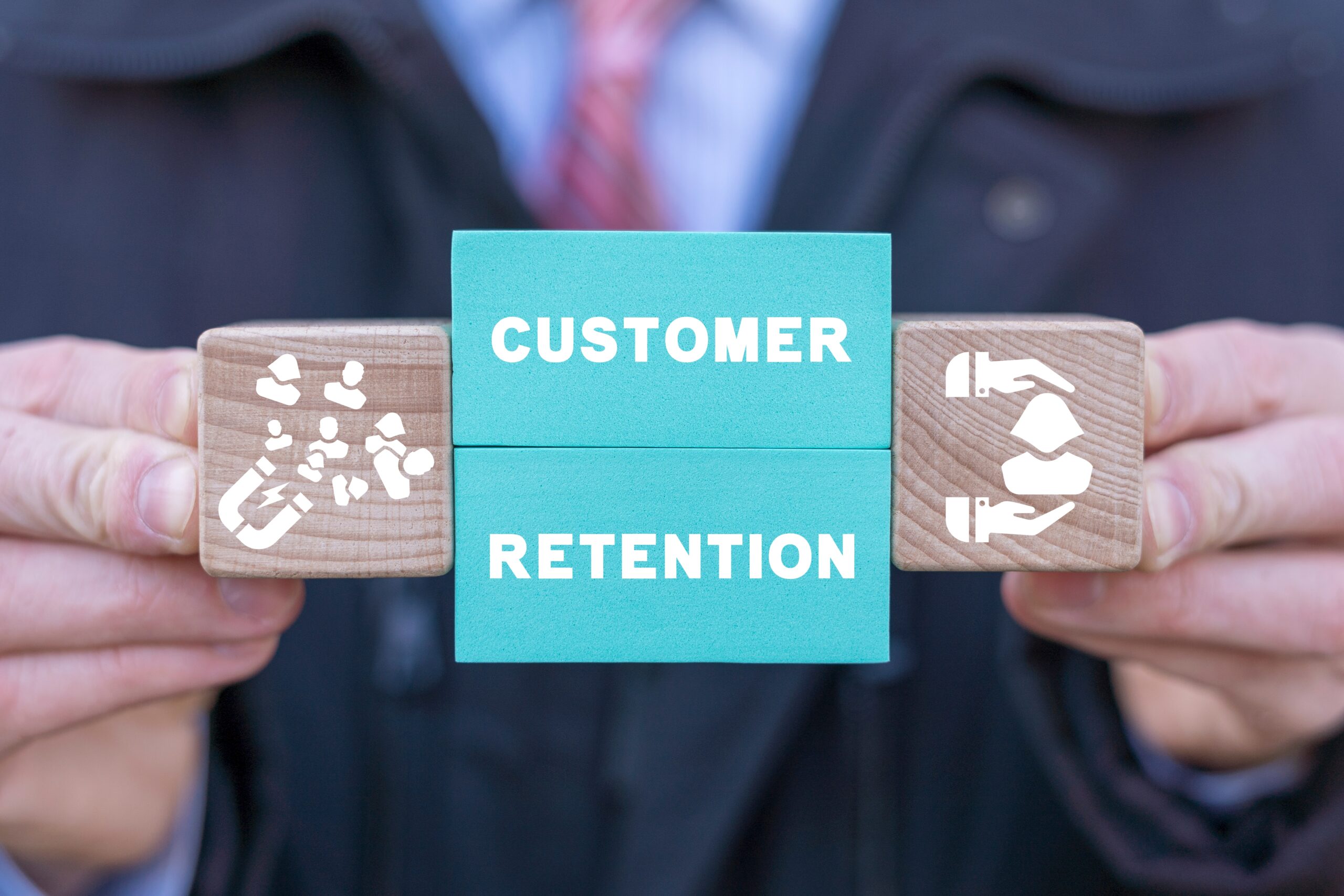Acquiring new customers is essential for business growth, but retaining existing ones is just as important—if not more so. Studies show that loyal customers spend more over time, refer new customers, and contribute to a brand’s long-term stability.
Strong customer retention strategies ensure sustainable success by fostering loyalty, maximizing customer lifetime value, and reducing acquisition costs. Companies prioritizing retention experience higher profitability, lower churn rates, and stronger brand advocacy.
This article explores actionable strategies to improve customer retention, enhance engagement, and build long-term client relationships to drive business growth.
Understanding Customer Retention: Why It Matters
Retaining customers is more cost-effective than acquiring new ones. Loyal customers make repeat purchases and act as brand ambassadors, referring others to the business. A strong retention strategy builds trust and enhances customer relationships, fostering a sense of belonging. Businesses that focus on retention reduce marketing costs, as retaining an existing customer is far cheaper than acquiring a new one.
Long-term customers provide valuable feedback and insights, helping businesses refine their products and services to meet evolving customer needs. Investing in retention leads to sustainable growth, a strong competitive advantage, and a community of engaged customers who drive word-of-mouth marketing.
Essential Customer Retention Strategies to Keep Customers Coming Back
Building a solid customer base requires proactive efforts. Below are proven customer retention strategies that drive engagement and long-term loyalty.
1. Delivering Exceptional Customer Service
Outstanding customer service is the backbone of retention. Fast response times, problem resolution, and proactive support show customers they are valued. Businesses should train teams to handle inquiries efficiently and personalize interactions. A seamless support system—including live chat, social media responsiveness, and dedicated account managers—enhances satisfaction, reducing the likelihood of customer churn. Additionally, implementing a multi-channel support strategy ensures customers can easily reach the business through their preferred communication platform via email, chat, or phone.
Beyond problem-solving, businesses should adopt a customer-first mindset, anticipating issues before they arise and offering proactive assistance. Providing comprehensive self-service options, such as FAQs and knowledge bases, can empower customers to resolve common problems independently, reducing frustration and enhancing their experience.
2. Personalization & Customer Engagement
Personalization makes customers feel valued, encouraging loyalty. Businesses should utilize data to tailor experiences, from personalized emails and product recommendations to birthday discounts and curated content. AI-powered tools and CRM systems can track preferences and purchase history, allowing companies to offer relevant suggestions and deepen engagement.
Moreover, businesses can leverage behavioral analytics to send dynamic content that aligns with a customer’s journey. For example, automated follow-ups after a purchase, personalized recommendations based on browsing history, and geolocation-based offers create a more tailored experience. The goal is to make customers feel uniquely valued, increasing their connection to the brand.
3. Creating a Seamless Customer Experience
It is crucial to provide a frictionless experience across all touchpoints. Complicated checkout processes, slow websites, or poor mobile optimization can frustrate customers and push them toward competitors. Investing in intuitive navigation, fast-loading pages, and easy payment options enhances user satisfaction and retention.
Businesses should also focus on omnichannel consistency, ensuring a smooth transition between online and offline interactions. A customer should be able to start a conversation on social media, continue via email, and complete a transaction in-store without encountering disjointed experiences. Minimizing checkout steps, offering one-click payment options, and simplifying account creation can prevent drop-offs and encourage repeat business.
4. Strengthening Relationships Through Consistent Communication
Maintaining an open line of communication builds trust. Email marketing, newsletters, and personalized follow-ups keep customers engaged while reinforcing brand presence. Social media interactions, exclusive updates, and proactive check-ins help maintain relationships and create community.
Aside from standard marketing emails, businesses should implement segmented campaigns that cater to customer interests, past purchases, and engagement levels. Drip email sequences, retargeting campaigns, and personalized push notifications help keep the brand top-of-mind without overwhelming the customer. Additionally, offering interactive content such as quizzes, surveys, and live Q&A sessions fosters deeper engagement and provides valuable customer insights.
5. Gathering & Acting on Customer Feedback
Listening to customers fosters trust and helps businesses improve customer retention. Surveys, reviews, and feedback loops provide insights into areas for improvement. Addressing concerns promptly and demonstrating a commitment to continuous improvement reassures customers of a company’s dedication to their satisfaction.
Businesses should go beyond simply collecting feedback—actively responding to customer concerns and implementing changes based on their input enhances credibility and trust. Transparency is key; sharing how customer feedback has shaped product improvements, service enhancements, or new offerings shows a commitment to customer-centric innovation. Creating a feedback community, such as an advisory panel or exclusive beta testing group, can further strengthen the relationship between the brand and its customers.
6. Rewarding Loyalty Through Incentives & Programs
Loyalty programs, discounts, and exclusive benefits encourage repeat business. Rewarding customers for continued support through points-based systems, VIP access, and referral incentives strengthens brand loyalty. Companies should ensure their rewards are valuable and accessible to maximize engagement.
To optimize loyalty programs, businesses should implement tiered reward systems that increase benefits as customers engage more. Gamifying rewards—such as through badges, leaderboards, or experiential perks—can make programs more engaging. Referral programs should incentivize referrers and offer newcomers compelling incentives to join. Recognizing long-term customers with surprise gifts or anniversary discounts reinforces emotional connections with the brand.
7. Leveraging Technology for Customer Retention Management
CRM software, automation tools, and AI-driven analytics enhance customer retention management by streamlining engagement and predicting customer needs. AI chatbots, automated follow-ups, and predictive analytics allow businesses to anticipate customer behavior and proactively address concerns, boosting retention rates.
Beyond automation, businesses can integrate AI-driven sentiment analysis to monitor social media mentions and real-time customer feedback, allowing quick intervention when issues arise. Predictive analytics can help companies anticipate churn risks, enabling them to take preemptive measures such as sending targeted retention offers or adjusting service approaches. Furthermore, incorporating interactive AI-driven experiences, such as virtual shopping assistants, can personalize interactions and strengthen customer connections.
Key Retention Metrics for Long-Term Success
To gauge the effectiveness of customer retention strategies, businesses must monitor key performance indicators (KPIs):
- Customer Churn Rate: Measures the percentage of customers who stop doing business within a given period. A lower churn rate indicates stronger retention and a healthy customer base.
- Repeat Purchase Rate: Indicates how often existing customers return to make purchases. A high rate suggests strong customer satisfaction and brand loyalty.
- Customer Lifetime Value (CLV): Assesses the total revenue a business can expect from a customer over time. A higher CLV means customers consistently contribute to the company’s profitability.
- Net Promoter Score (NPS): Evaluates customer satisfaction and the likelihood of referrals. A strong NPS indicates that customers are highly engaged and likely to recommend the brand.
- Customer Engagement Score: This score measures how frequently and meaningfully customers interact with the brand through various channels, such as social media, website visits, and email responses.
- Retention Rate: Tracks the percentage of customers who continue doing business over a specific period. A high retention rate demonstrates a company’s ability to maintain strong relationships and long-term growth.
- Time Between Purchases: Analyzes how often a customer returns to buy again. Businesses can use this data to create personalized marketing strategies and incentives to encourage more frequent engagement.
Tracking these metrics allows companies to identify gaps in their retention strategies and refine their approach for better results. Businesses should set benchmarks and continuously analyze trends to ensure their retention efforts remain effective.
Common Retention Pitfalls and How to Avoid Them
Many businesses struggle with retention due to common missteps. Avoiding these pitfalls is key to long-term success.
1. Ignoring Customer Feedback
Failing to act on feedback can alienate customers. Businesses must actively listen, address concerns, and implement changes based on customer suggestions to enhance satisfaction. When customers feel heard, they develop a stronger connection to the brand.
2. Overlooking Personalization
Generic interactions fail to resonate with customers. Companies should use data-driven personalization to tailor communication, recommendations, and services to individual preferences. Personalization enhances the customer experience and makes individuals feel valued.
3. Lack of a Loyalty or Incentive Program
Without rewards, customers may not feel compelled to stay. Implementing meaningful loyalty programs encourages repeat business and strengthens customer relationships. Offering exclusive deals or early access to products makes customers feel appreciated and encourages them to continue engaging with the brand.
4. Poor Communication
Inconsistent messaging or lack of engagement can cause customers to lose interest. Maintaining regular, valuable interactions ensures customers remain connected to the brand. Effective communication builds trust and encourages long-term relationships.
5. Complicated Customer Experience
A confusing or inefficient customer experience can drive customers away. Businesses should ensure that every interaction—whether through a website, app, or support channel—is smooth, easy to navigate, and free of unnecessary obstacles.
6. Failing to Adapt to Customer Needs
Customer preferences and behaviors change over time. Businesses that fail to evolve alongside their customers risk losing relevance. Regularly updating offerings, marketing strategies, and customer engagement approaches helps maintain loyalty.
Elevate Your Business With Unstoppable Customer Loyalty
Mastering customer retention strategies is the key to long-term business success. Retaining customers goes beyond transactions—it fosters lasting relationships, drives higher profits, and strengthens brand loyalty. Businesses that prioritize retention reduce churn, increase engagement, and create customers who become advocates, fueling sustainable growth.
At Third Coast, we understand the power of customer retention management in building a thriving business. By leveraging technology, delivering personalized experiences, and rewarding loyalty, we help companies create meaningful, lasting connections with their customers. Don’t wait to strengthen your retention strategy—reach out to us today and transform your customer relationships for long-term success!





